Today we visited Acoma Pueblo. We visited yesterday, too. Two trips of nearly 100 miles each way in two days? Have you ever driven 100 miles for a good photo opportunity, only to realize that you forgot your camera? That was my senior moment of this trip! Janie’s response was “Well, this is too good an opportunity to pass up without a camera, so we should come back tomorrow.” It meant passing up some other sightseeing possibilities, but when we arrived at Acoma, we could see that it would be worth a trip back.
 While we were there on Thursday, we met Ed, Jessica and Eva, who were selling pottery at a viewpoint along the road. We spent quite a bit of time talking with them, and Ed was proud to show us the work he had done.
While we were there on Thursday, we met Ed, Jessica and Eva, who were selling pottery at a viewpoint along the road. We spent quite a bit of time talking with them, and Ed was proud to show us the work he had done.
H e also took time to explain how they made traditional dyes from natural minerals found in locations they keep secret even from other family members.
e also took time to explain how they made traditional dyes from natural minerals found in locations they keep secret even from other family members.
Eva was painting a piece and showed us some of the dyes along with her work.
On our return trip, we were able to take some pictures of the landscape. One formation reminded us of Stonehenge. A permit is required to photograph at the site. I wasn’t clear whether that applied just to the Sky City, or to the whole Pueblo, so I was cautious about taking pictures until we arrived at the Cultural Center on the 2nd day and I got the permit. This photo shows the “Stonehenge” in the foreground and the Sky City on the mesa in the distance.
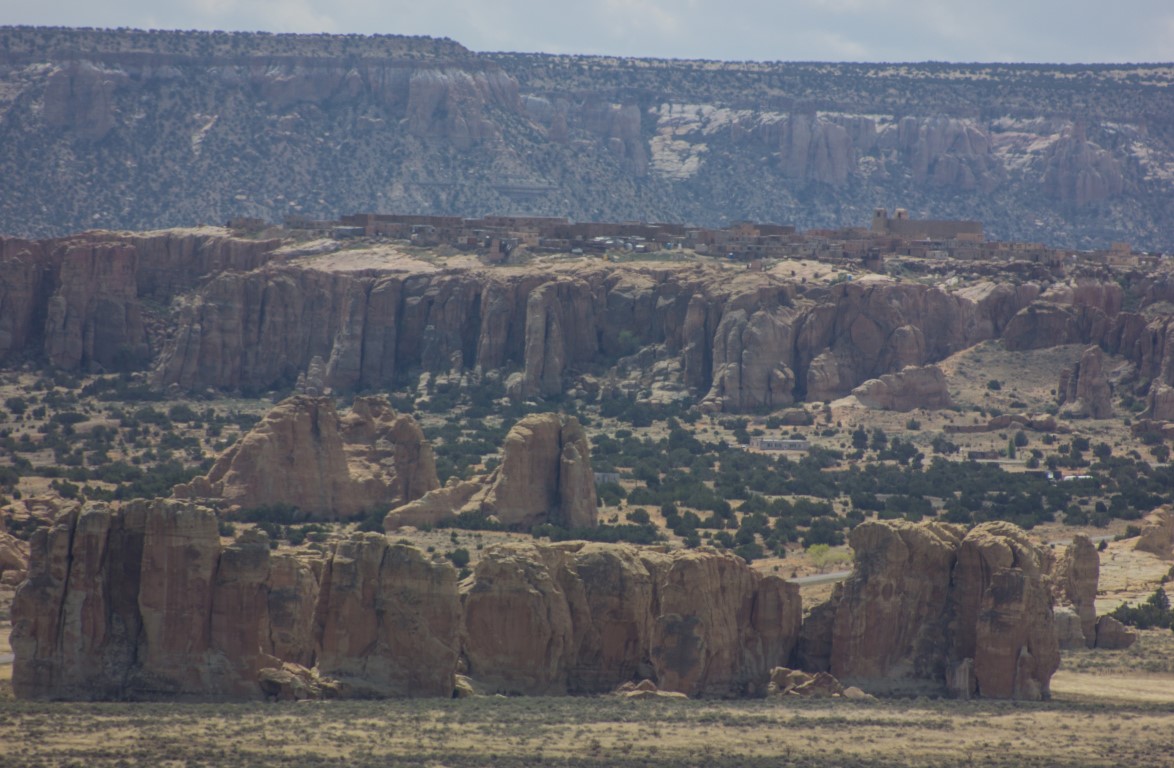 The Acoma’s have a guided tour of the Sky City site, on top of a 350 foot mesa, which has been continuously occupied for over 800 years. The Acoma’s believe it has been an ancestral site for much longer, but their stay was interrupted by Spanish invaders.
The Acoma’s have a guided tour of the Sky City site, on top of a 350 foot mesa, which has been continuously occupied for over 800 years. The Acoma’s believe it has been an ancestral site for much longer, but their stay was interrupted by Spanish invaders.
The tour was really interesting. We were taken by a shuttle to the top of the mesa, where we were guided on foot by a member of the community. The Sky City site is primitive, although I saw some modern accommodations, such as port-a-potties, propane tanks and cars. The mound in the center of this photo is a wood-fired bread oven.
But water still must be hauled up to the top of the mesa, the terrain is uneven, and the houses are tiny.
This house (part of a group of row houses) is thought to date back to before the Spanish arrived. The bottom floor is made of sandstone brick and the doorways are very low. The upper floors are made from adobe brick, which was introduced by the Spanish and the doorways are taller, which may reflect physical changes in the people after better diets were introduced by the Spanish.
It was interesting to learn that the Acoma society is matriarchal. These homes are passed down through families to the youngest daughter. If there is no daughter, they go to the youngest son, but then pass to his youngest daughter in the next generation.
Although the tour guide and others said that the Acoma do not discuss their religion and rituals with outsiders, and that they are passed down orally, they were documented by Northwest photographer Edward S. Curtis in the 1920’s. That is not to say that many people were in favor of the disclosure–most of this kind of documentation of tribal customs was done in secret and over the objection of most tribe members. If you’re interested, here is a link to Curtis’ detailed description of the Acoma people and their customs, including his photographs. The North American Indian
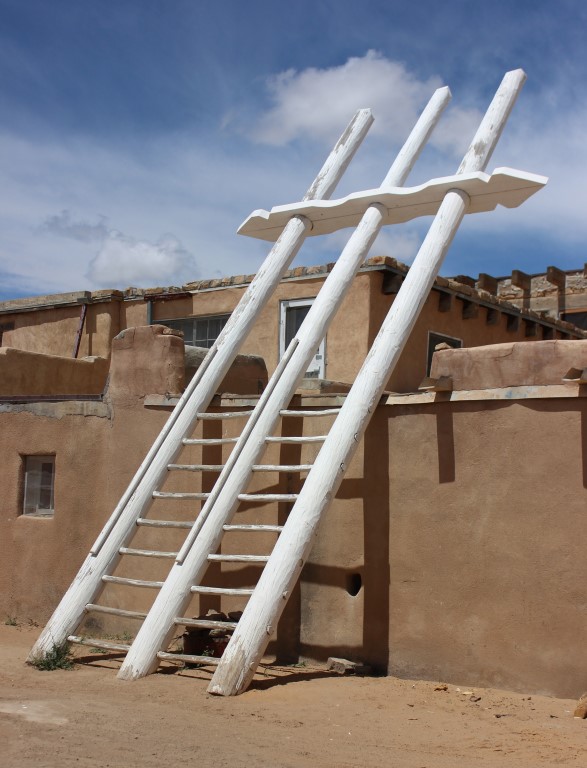 Our guide did show us the exteriors of some Kiva’s—rooms where the men conducted ceremonies. She explained that the Kiva’s are now square, whereas they used to be round. The Spanish destroyed the round ones in order to suppress the Acoma religion, and the rebuilt Kivas were disguised and made to look like part of houses.
Our guide did show us the exteriors of some Kiva’s—rooms where the men conducted ceremonies. She explained that the Kiva’s are now square, whereas they used to be round. The Spanish destroyed the round ones in order to suppress the Acoma religion, and the rebuilt Kivas were disguised and made to look like part of houses.
Most of the people live below the mesa in more modern communities, but some people—including the tribal leaders—live all year round on the mesa.
Our tour ended at the church, originally built in the 1600’s. We were not allowed to take pictures inside, but it had 8-foot thick walls, a dirt floor, and included several beams that were never allowed to have touched the ground. Paintings seen inside the church were done in the 1600’s and rescued during a sacking of the cathedral during a Pueblo uprising in the late 1600’s.
On our way back to Santa Fe, we stopped at a Cracker Barrel to eat. I had never been to one before, but they are obviously designed for the retired tour bus/RV crowd. (For those of you who knew her, we thought of Janie’s mom, who would have loved the food: meatloaf, chicken and dumplings, ham, and turkey.) Since we were late eating lunch, we decided to have a more substantial meal there at around 4 PM. The food was good, but I realized that we had become retired early eaters! What next?
Today is our last full day in New Mexico. We may not have gotten to see everything we wanted to, but we’ve enjoyed it. I did realize that 4 days may be all my Northwest body can take of the low humidity. Even though it rained today, I feel like I’m shriveling up, and it will be good to get back to our Northwest dampness.



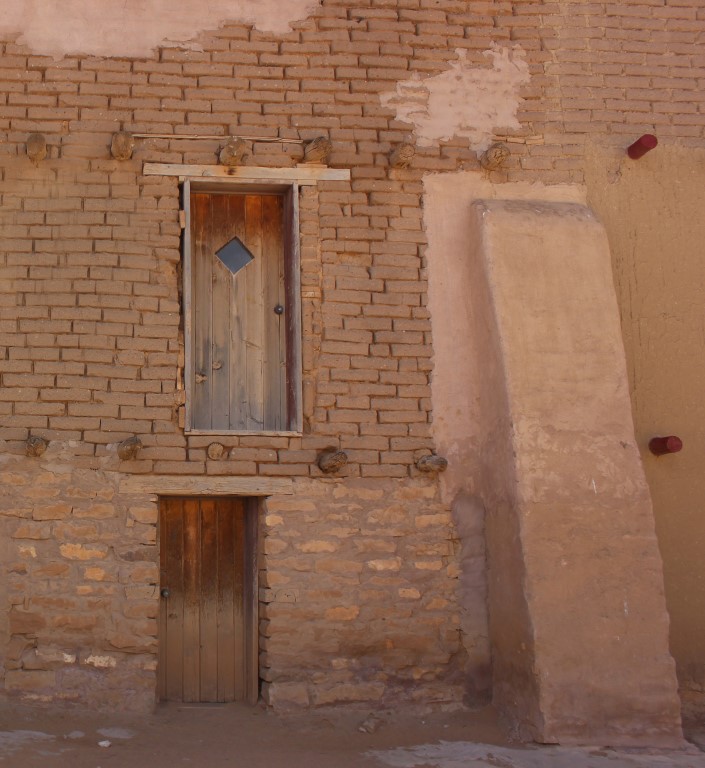
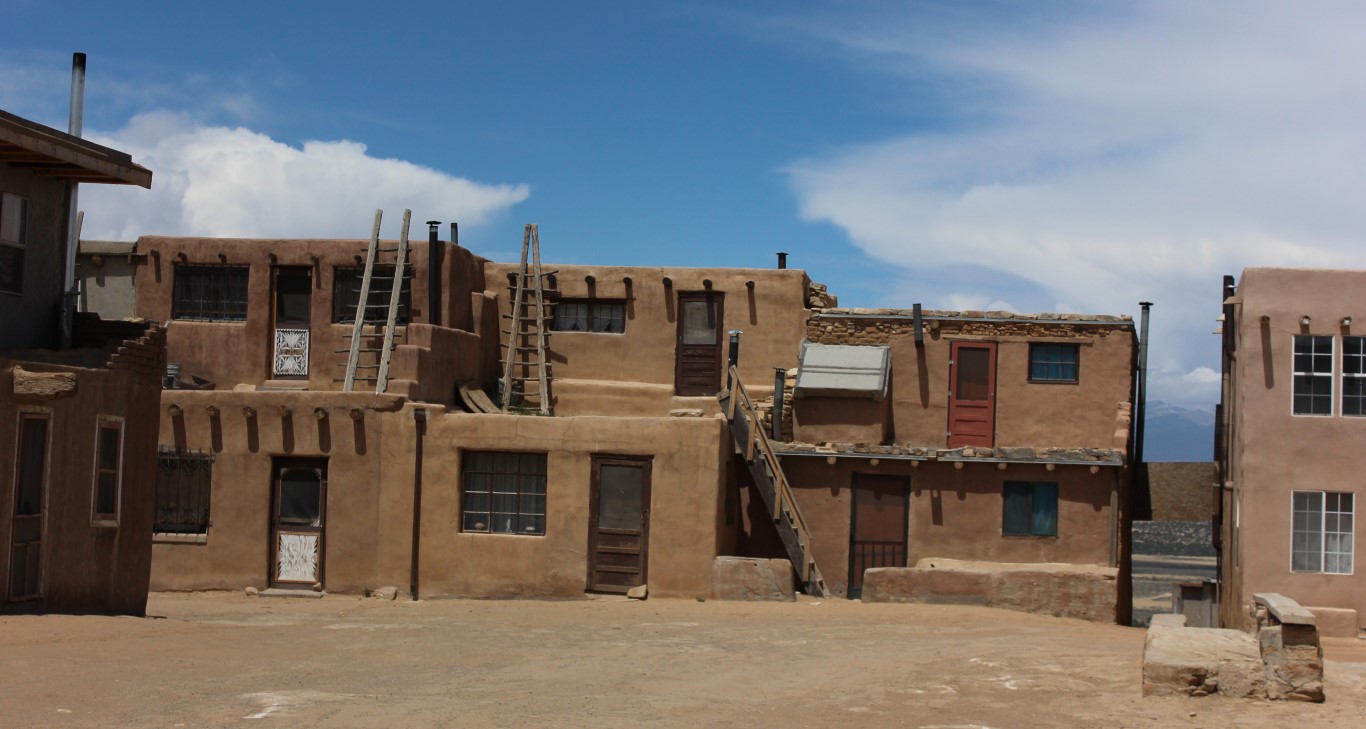
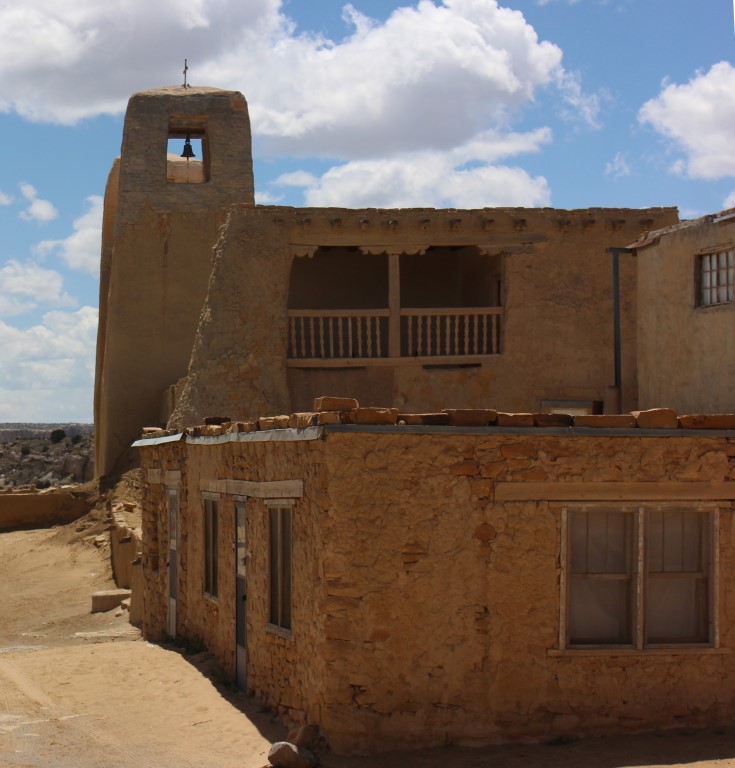
Looks like it was a wonderful time for you to both enjoy the beautiful scenery and the artistry as well as the living history. I love that some places are not to be photographed, leaves the reader to imagine the art work to be motivated to visit and experience yourself. You have given me a great glimpse of a beautiful part of the county and all its stories that go with it! Thanks for “taking us along”!
Really interesting, and good photos (once you finally remembered your camera!). Thanks for the tour.